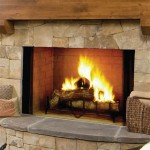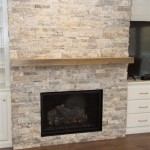Here is an article about Rustic Gas Fireplaces, focusing on clarity, information, and adhering to the given constraints:
Rustic Gas Fireplaces: Combining Charm and Convenience
Rustic gas fireplaces offer a compelling alternative to traditional wood-burning fireplaces. They provide the aesthetic appeal of a classic hearth, characterized by natural materials and a warm, inviting ambiance, while incorporating the convenience and efficiency of modern gas technology. This fusion makes them a popular choice for homeowners seeking both style and practicality.
The term “rustic” encompasses a broad range of design styles, united by a common theme: an emphasis on natural materials, hand-crafted elements, and a weathered, aged appearance. This can translate into a fireplace that evokes a cozy cabin, a grand lodge, or a farmhouse retreat. The key is to create a focal point that feels authentic and connected to the surrounding environment.
Key Features of Rustic Gas Fireplace Designs
Rustic gas fireplaces differentiate themselves through several defining characteristics. These features contribute to their overall aesthetic and functionality, allowing them to seamlessly blend into a variety of interior designs.
Material Palette: Natural stone is a cornerstone of rustic design. Fieldstone, river rock, and stacked stone are commonly used to create fireplace surrounds that evoke a sense of groundedness and permanence. Brick, particularly reclaimed brick with its inherent imperfections and character, also plays a significant role. Wood, especially reclaimed wood or timber, is used for mantels, beams, and other decorative elements, adding warmth and texture. The combination of these materials creates a rich and visually appealing focal point.
Design Elements: The design elements often incorporate hand-crafted details. This can include hand-hewn beams, custom-built mantels, and unique stonework patterns. The focus is on creating a look that feels less manufactured and more organic. In some designs, wrought iron accents, such as fireplace screens or decorative elements, are incorporated to add a touch of historical charm. The careful selection and arrangement of these design elements are crucial for achieving a truly rustic aesthetic.
Firebox Aesthetics: While the exterior surround establishes the rustic style, the interior firebox is equally important. Gas logs are designed to mimic the appearance of real wood, and high-quality logs with realistic textures and ember beds significantly enhance the authenticity. Some models even feature adjustable flame heights and patterns, allowing homeowners to customize the visual experience. The integration of a realistic firebox is essential for completing the illusion of a wood-burning fireplace.
Advantages of Gas Fireplaces Over Wood-Burning Fireplaces
Beyond the aesthetic appeal, gas fireplaces offer several practical advantages over traditional wood-burning fireplaces. These benefits contribute to their growing popularity and make them a desirable option for modern homeowners.
Convenience and Ease of Use: Gas fireplaces offer unparalleled convenience. They can be ignited with the flip of a switch or the press of a button, eliminating the need to gather, chop, and store firewood. The heat output can be easily adjusted to maintain a comfortable temperature, and the fireplace can be turned off instantly, providing greater control and efficiency. This ease of use makes gas fireplaces a practical choice for everyday heating and ambiance.
Efficiency and Cleanliness: Gas fireplaces burn cleaner and more efficiently than wood-burning fireplaces. They produce significantly less smoke, ash, and creosote, reducing the risk of chimney fires and improving indoor air quality. Gas fireplaces also vent more effectively, minimizing heat loss and maximizing energy savings. This makes them a more environmentally friendly and cost-effective heating option.
Safety and Maintenance: Gas fireplaces are generally safer than wood-burning fireplaces. They eliminate the risk of sparks and embers escaping the firebox, reducing the potential for accidental fires. Gas fireplaces also require less maintenance than wood-burning fireplaces. There is no need to clean out ashes or sweep the chimney as frequently, saving time and effort. Regular inspection by a qualified technician is recommended to ensure safe and efficient operation.
Considerations When Choosing a Rustic Gas Fireplace
Selecting the right rustic gas fireplace requires careful consideration of several factors. These factors will help ensure that the fireplace complements the existing decor, meets the heating needs of the space, and complies with local building codes.
Size and Placement: The size of the fireplace should be proportional to the size of the room. A fireplace that is too large can overwhelm the space, while a fireplace that is too small may not provide adequate heat or visual impact. The placement of the fireplace should also be carefully considered. It should be positioned in a location that maximizes its visibility and integrates seamlessly into the overall design of the room. Factors such as furniture arrangement and traffic flow should be taken into account.
Venting Options: Gas fireplaces require proper venting to exhaust combustion gases safely. There are several venting options available, including direct vent, B-vent, and vent-free. Direct vent fireplaces draw combustion air from outside and exhaust gases directly outside, making them the safest and most efficient option. B-vent fireplaces use existing chimneys or dedicated vents to exhaust gases. Vent-free fireplaces do not require venting, but they are subject to certain restrictions and may not be suitable for all locations. Local building codes should be consulted to determine the appropriate venting option.
Fuel Type and Efficiency: Gas fireplaces can be fueled by natural gas or propane. Natural gas is generally more affordable and readily available in urban areas, while propane is a good option for rural areas without access to natural gas lines. The efficiency of a gas fireplace is measured by its AFUE (Annual Fuel Utilization Efficiency) rating. A higher AFUE rating indicates a more efficient fireplace, which will result in lower energy bills. Homeowners should consider the fuel type and efficiency when selecting a gas fireplace to maximize energy savings.
Installation and Safety Standards: Proper installation is crucial for ensuring the safe and efficient operation of a gas fireplace. It is recommended to hire a qualified and licensed contractor to install the fireplace. The installation should comply with all applicable building codes and safety standards. Regular inspections and maintenance are also essential for preventing problems and ensuring the longevity of the fireplace. Local authorities can provide information on specific safety standards and regulations.
By carefully considering these factors, homeowners can select a rustic gas fireplace that not only enhances the aesthetic appeal of their home but also provides warmth, convenience, and peace of mind.

Ambiance Gas Fireplaces Inserts

Rustic Gas Fireplace Inserts Kozy Heat

Nordik 34i Kozy Heat Fireplaces

Fireplaces Wood Or Gas They Are A Desirable Home Amenity The Denver Post

Choose A Mendota Gas Fireplace Lanchester Grill Hearth

Fireplaces Complete Home Concepts

Enviro S Gas G39 Fireplace

Your Guide To Rustic Design

Fireplace Xtrordinair 3615 Ho Gsr2 Cedar Hearth Mick Gage Plumbing Heating

Pin On Living Room Ideas








